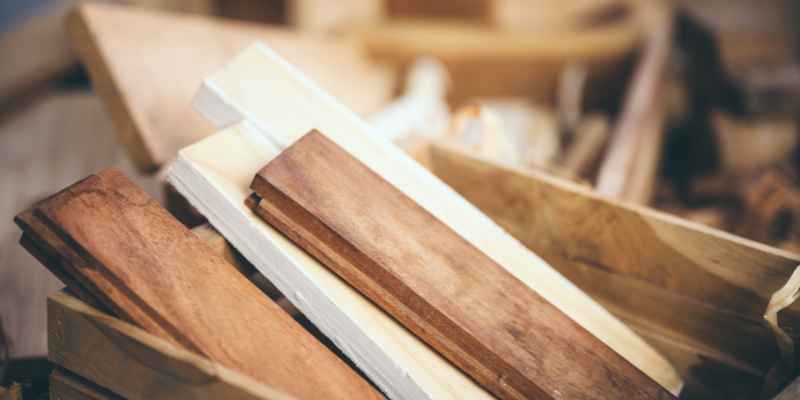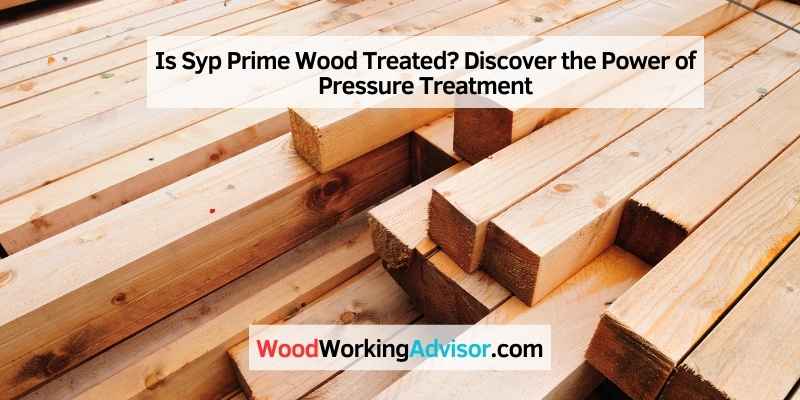Yes, Syp Prime Wood is treated with pressure treatment, making it ideal for outdoor use due to its durability and strength. Syp lumber is commonly pressure-treated with chemicals to prevent rot and is a cost-effective choice for outdoor projects such as decks.
The use of Southern yellow pine (SYP) for construction offers a robust and reliable option for various applications. SYP, known for its strength and durability, is harvested in the southern United States and is particularly favored for framing residential structures and outdoor living spaces.
Additionally, the pressure treatment aspect of SYP lumber ensures protection against termites, fungal decay, and rot, making it a popular choice for long-lasting and sustainable building projects.
Advantages Of Pressure-treated Syp Wood
Durability And Strength
Pressure-treated Southern Yellow Pine (SYP) wood is renowned for its exceptional durability and strength. The pressure treatment process enhances the wood’s resistance to decay, termites, and fungal damage, making it well-suited for various outdoor applications.
Suitability For Outdoor Use
Pressure-treated SYP wood is an ideal choice for outdoor projects due to its ability to withstand harsh environmental conditions. Its resistance to moisture and insects, as well as its long lifespan, make it a preferred material for decks, fences, and outdoor furniture.
Differences Between Prime Wood And Treated Wood
Definition Of Prime Wood:
Prime wood refers to lumber that has been painted with a primer to enhance the bond with finish coats.
Explanation Of Treated Wood:
Treated wood is lumber that has undergone a chemical process to protect it from rot and decay.
Identification Of Treated Wood
Treating wood is essential to enhance its durability and protect it from rotting. When it comes to Southern yellow pine (SYP) wood, it is not only naturally durable but also takes pressure treatment exceptionally well. This makes it an ideal choice for outdoor applications such as decking. In fact, pressure-treated SYP lumber is stronger and more cost-effective compared to other decking materials.
Reading Tags And Stamps
One way to identify treated wood is by reading the tags or stamps attached to it. Manufacturers often attach white tags on the end of treated wood or use colored stamps directly on the wood surface. These tags or stamps provide valuable information about the wood’s treatment process and preservation. By checking these tags or stamps, you can easily determine if the wood has been pressure treated.
Visual And Olfactory Indicators
Aside from reading tags and stamps, there are visual and olfactory indicators that can help identify treated wood. Pressure-treated wood often has a distinctive green tint, which is a result of the chemicals used during the treatment process. Additionally, you may also notice an oily or chemical odor when smelling the wood. These visual and olfactory cues are clear indications that the wood has been pressure treated and is suitable for outdoor use.
Significance Of Southern Yellow Pine (syp)
Southern Yellow Pine (SYP) is an excellent choice for outdoor use as it is not only durable and strong, but it also takes pressure treatment exceptionally well. This means that pressure-treated SYP lumber is not only stronger but also more cost-effective compared to other deck materials.
Strength And Durability
Southern Yellow Pine (SYP) is renowned for its exceptional strength and durability. Grown in the southern United States from Virginia to Florida and west to the Piney Woods of Texas, SYP is a preferred choice for various construction projects, both residential and commercial. Its natural properties make it highly resistant to shrinking, warping, and swelling, ensuring long-lasting performance.
Geographical Growth Area
SYP is native to the southern regions of the United States. This region’s climate and soil conditions provide optimal growth conditions for SYP, resulting in the production of high-quality lumber. The warm and humid climate combined with the acidic soil creates an ideal environment for the tree’s growth and development.
SYP is abundant in this geographical area, making it readily available and cost-effective compared to other types of wood. Its accessibility contributes to its popularity and widespread use in various industries, such as construction, woodworking, and furniture making.
Pressure Treatment Methods
When it comes to treating Southern Yellow Pine (SYP) wood, pressure treatment methods play a crucial role in enhancing its durability for outdoor applications. One of the popular methods used is pressure treatment with preservative agents.
Micronized Copper Azole Preservative Agents
Pressure-treated with micronized copper azole, SYP wood is shielded against termites, fungal decay, and rot. This method ensures the longevity of the wood, making it ideal for outdoor structures.
Preservative Agents
Preservative agents are essential components in the pressure treatment process of SYP wood. These agents provide protection against termites, decay, and rot, making the wood suitable for various environmental conditions.
Purchase Considerations
When purchasing SYP Prime Wood, there are a few important factors to consider. Understanding the ‘Prime’ label, as well as choosing between ground contact or above-ground lumber, can make a significant impact on the overall quality and durability of your project. Let’s take a closer look at these purchase considerations.
Understanding ‘prime’ Label
When it comes to SYP Prime Wood, the ‘Prime’ label refers to the highest grade of lumber. This means that the wood has gone through a rigorous selection process to ensure superior quality and minimal defects. Choosing prime lumber not only guarantees a more visually appealing finished product, but it also provides better structural integrity and longevity.
Choosing Ground Contact Or Above-ground Lumber
When selecting SYP lumber, it’s crucial to determine whether you need ground contact or above-ground options. Ground contact lumber is specifically treated to withstand contact with soil, moisture, and insects. It’s ideal for projects such as decking, where the wood will be in direct contact with the ground.
Above-ground lumber, on the other hand, is suitable for applications where the wood will not be exposed to direct ground contact. This type of lumber is still treated to resist decay and insects, but the treatment is not as extensive as for ground contact lumber. If you’re working on a project like framing or fencing that won’t be in direct contact with the ground, above-ground lumber is a more cost-effective choice.
Now that you understand the significance of the ‘Prime’ label and the differences between ground contact and above-ground lumber, you can make an informed decision when purchasing SYP Prime Wood. By selecting prime lumber and choosing the appropriate treatment level for your project, you can ensure a long-lasting and visually appealing result.
Environmental Impact And Safety
Syp Prime Wood is pressure-treated with chemicals to resist rot and decay, making it ideal for outdoor use. Southern yellow pine durability provides strength and cost-efficiency compared to other deck materials.
Responsible Manufacturing
Manufacturing SYP Prime Wood involves strict adherence to eco-friendly practices, minimizing carbon footprint.
Safe Usage And Environmental Friendliness
SYP Prime Wood is treated with micronized copper azole, ensuring safety against termites and decay.
SYP lumber is pressure-treated with preservative agents, safeguarding against termites, fungal decay, and rot.

Frequently Asked Questions Of Is Syp Prime Wood Treated
Is Syp Wood Treated?
Yes, SYP wood is treated. It takes pressure treatment well, making it durable and excellent for outdoor use. Pressure-treated SYP lumber is stronger and less costly, making it a great choice for decks and outdoor projects.
Is Prime Wood The Same As Treated Wood?
Yes, prime wood and treated wood are different. Prime wood is painted to make the finish stick better, but does not prevent rot. Treated wood has chemicals forced into it to prevent rot. Southern yellow pine is ideal for pressure treatment and outdoor use.
How Can You Tell If Wood Is Pre Treated?
To determine if wood is pressure-treated, check for a white tag or colored stamp, incision marks, green tint, or a chemical smell. Pressure-treated wood is durable, takes preservatives well, and is ideal for outdoor projects like decks due to its resistance to rot.
Choose Southern Yellow Pine (SYP) for reliable, strong lumber.
What Does Syp Mean For Wood?
SYP stands for Southern Yellow Pine. It is a type of wood known for its strength and durability. SYP lumber is often pressure treated, making it great for outdoor use as it is resistant to rot and decay. It is also less expensive compared to other decking materials.
Conclusion
When it comes to SYP prime wood, rest assured of its durability and strength, especially with pressure treatment that enhances its outdoor use. Pressure-treated SYP lumber stands out for its robustness and cost-effectiveness, making it a top choice for various projects.


